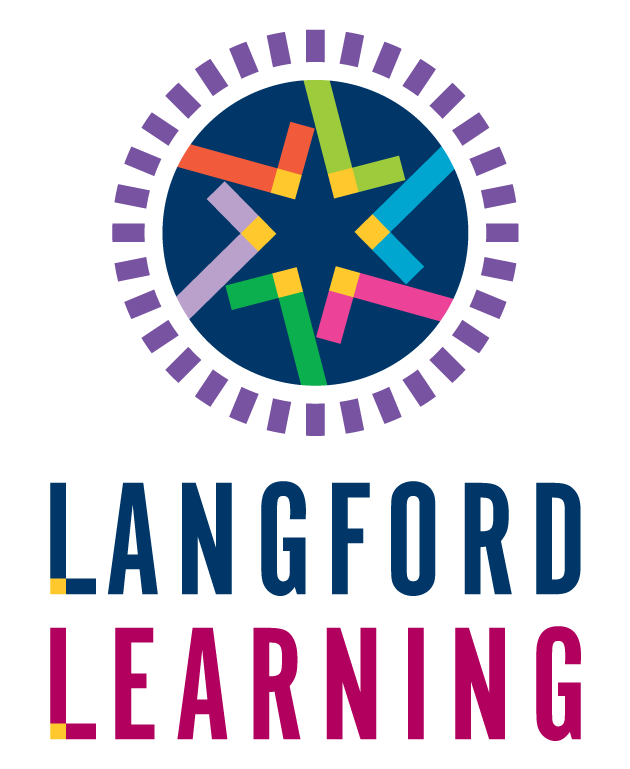The Role of Meaning: Cultivating Intrinsic Motivation Series with David P. Langford (part 6)
- David Langford
- Education, Podcast
- 0 Comments

This podcast was originally published on In Their Own Words for The W. Edwards Deming Institute
Your “meaning network” of neurons includes the subjects (like math wizzes) and relationships (like friendships) that are important to you. In this episode, Andrew and David talk about helping folks find the “why?” that intrinsically motivates them to do something.
TRANSCRIPT
0:00:02.5 Andrew Stotz: My name is Andrew Stotz and I’ll be your host as we continue our journey into the teachings of Dr. W. Edwards Deming. Today I am continuing my discussion with David P. Langford, who has devoted his life to applying Dr. Deming’s philosophy to education and he offers us his practical advice for implementation. Today’s topic is tapping into meaning to release intrinsic motivation. David, take it away.
0:00:28.7 David Langford: Thank you, Andrew, and good to be back.
0:00:32.3 AS: Good to see you.
0:00:34.1 DL: So we have been on this journey of five elements of intrinsic motivation and these are the ones that, through my research at least, are the most important elements if you want to see intrinsic motivation emerge. Why are we doing that? Because Dr. Deming was the one that really made it clear that you have to have intrinsic motivation and stop extrinsically motivating people. So that’s why we’re concentrating on, what are these elements? So the first element was the element of control or autonomy in a situation. The second element was cooperation and we talked about the support network that’s necessary and the previous podcast was all about the challenge and today we’re talking about the meaning. How did… That meaning is the fifth element to tap into. So in every human brain there is a preponderance of cells in your meaning network. Some of it is… Some of it you’re born with, some of it you acquire through life, but it’s what… It’s the cells that are activated when you get a sense of meaning about, why are we doing something or why are we here, what’s happening?
0:02:04.0 DL: And the more we can tap into that network with people and tap into their meaning network, we start to see more intrinsic motivation emerge and therefore more joy in learning and work emerge and therefore a higher level of workmanship that often comes out of that same thing.
0:02:23.3 AS: And when you say meaning network, sometimes when I think of network, I think of a network of people, but you’re talking about a neurological network.
0:02:30.5 DL: Yeah, we’re talking about the actual neurons in your brain that form the network of meaning behind your life. It’s… Sometimes we’re just born with a preponderance of cells in certain areas, like I have five children and one of them was just born with the gift of mathematics and that’s just the way it was. And another one was just born with his gift of music and another one… On and on. And those are just there at birth. And I don’t think we had anything to do with it until we started to uncover that, oh, wow, this meaning… This has a lot of meaning for this individual. In other ways, you can also acquire a meaning network over time. That’s for myself and probably for you too, Andrew, that the meaning in network now includes Deming, and the work of Deming, but that had to become an acquired kind of thing. So when people go through that process of learning about it, sometimes they say, my brain hurts because you are readjusting the actual neurons and the network of neurons in your brain that taught you to think about something.
0:03:50.9 DL: So if you had a network of neurons for management and maybe even went to college like I did or university, got a master’s degree in management, et cetera, it taught you to think in a certain way. And Deming’s work actually, sometimes trashes all of that or sometimes just causes you to have to think in a whole different way. And so then you have to start to readjust your meaning network. So it’s been a lifelong interest for me to figure out, well, how do we get more of that to happen? So probably the very first element I want to talk about is relevance. So when you’re trying to get somebody to do something, whether it’s just work or we’re talking about learning in schools, et cetera, is there a relevance? Why are we doing this? Kids don’t ask, why is the sky blue or things like that just to make you mad and make your life miserable. They’re actually trying to seek meaning in their life and try to understand what’s going on. So the tool we often use is five whys. When you’re starting to work through something, “Why do we have to do this?”
0:05:13.0 DL: And you have to answer that question and then, “Okay, then why is that so?” And then so on and so forth. And each time you ask, “Why did I say what I did in the previous why and think through stuff?” But that actually gets people to tap into the level of meaning. I never forget I saw five whys one time on, I think it was a group of first graders or something and they’d done this five whys and on why do we have to learn to read? And they’d gone through all these kinds of things, but I’ll never forget that the fifth why was we have to learn to read because if we don’t, we’ll be homeless and die. [laughter] So there’s…
0:05:57.9 AS: Right to the point.
0:05:58.5 DL: As a group of kids. Yeah, that’s pretty important, right? And so tapping into that is really important. And so when you get that kind of relevance, you also get a joy that happens in learning because you’re happy about it because it’s relevant to you and it’s meaningful. They have the age old question, why do we why do have to learn math and people often talk about that, that, I’ll probably never use this again in my whole life.
0:06:28.6 DL: And well, if you are not helping students understand the meaning behind that or tap into their own meaning network about why math is important, it’s going to constantly be a struggle or other areas that sometimes we think of as boring like accounting or things like that. Certain people just look at those numbers and love working with numbers and they get a joy in that and they have relevance within that. So relevance is really important and that gets you a level of joy of learning.
0:07:03.6 AS: Right. Can we just go back one step and just describe what you mean by meaning?
0:07:11.9 DL: Well, there’s a group of cells in everybody’s brains, neurons called the meaning network. And these are the connections that you’ve made over time. And just like what is describing before that either you were born with or you’ve acquired over time, but it’s a meaning network. And so two people can sit and listen to the same podcast or broadcast, et cetera. And one of them just thinks it’s totally boring, boring and worthless. And the other one is just totally engrossed in it. And it all has to do with your meaning network and your brain and whether or not that podcast is tapping into your meaning network or challenging your meaning network.
0:07:54.2 AS: And in a classroom, what would be the opposite of tapping into the meaning network?
0:08:01.9 DL: Somebody says, “Well, why do we have to learn this?” And the teacher says, “Because I said so.”
0:08:07.1 AS: Okay. It’s clear.
0:08:09.7 DL: Yeah. That’s not good learning. It’s not gonna motivate somebody to want to learn something. It’s just gonna motivate them just to avoid punishment or seek some cheap reward. And that’s often why we resort to those extrinsic kinds of motivations because we don’t wanna tap into the meaning network. It takes a lot more time to go in depth and to get people to really… To get a deep understanding of it. I think about my journey, understanding Deming and maybe yours is the same way. It didn’t happen overnight. It took actually several years and I’m still on that journey after 40 years of really trying to understand what he was talking about and why it was important and how it applies in my life, et cetera. So that’s tapping into that meaning network.
0:09:01.6 AS: And you said something that sometimes people don’t want to tap into their meaning network. Maybe that’s an interesting thing to understand. Why is it at times, maybe each of us don’t want to tap into it? Or there’s some people that may say, I never want to tap into that.
0:09:16.2 DL: Well, we get caught up into just running things, and making stuff happen without wanting to think about, why are we doing this? And when you do that, then you end up just resorting to getting people to do stuff. And if you don’t do this, I’m just going to make your life so difficult you wish you would have, which is not good management.
0:09:41.2 AS: So for the listeners and the viewers out there if you find yourself just running in circles, doing a bunch of stuff and realizing that there’s no meaning to it, maybe that’s the time to stop and listen and let’s continue on about bringing this… You talked about relevance, continue on…
0:09:58.0 DL: Yeah. So another way you could tap into the meaning network is just to concentrate on the quality of the work. And that leads us to a pride of workmanship. And when you’re concentrating on the quality of it, instead of just production or just getting through it, you get a whole different level of thinking about something and you tap into a level of relevance that is not normally there.
0:10:32.1 DL: So like in school, if I give them this… If I gave an assignment and we were just talking about math and they say, “Well, you have to do these 30 problems.” Well, if we talk about how to do that in a quality way, we start to tap into a pride of workmanship with that. So what would that mean to do this in a quality way? Well, the numbers have to be lined up and sometimes kids will say things, well, it should be neat. Well, we might have to define, what does neat mean? What would it look like if it was neat? But you’re tapping into a level of relevance and understanding that’s deeper than just do this to get through it. So we can go on to the next chapter which really means there’s not much meaning to that, right? It’s more of a survival, just get through it and get onto the next thing.
0:11:19.4 AS: And I’m thinking about in the corporate sphere, Deming talked about quality in the eyes of the customer and develop… The process, improving the quality of work and then seeing the customer being satisfied or achieving their goals through it just like with a student to see them achieve their goals… There is true joy in and meaning to what you’re doing.
0:11:46.3 DL: Yeah. Well, just before we came on, you were showing me some feedback that you had from your students, which are ultimately your customer in your college class, et cetera. And you were really excited about the feedback. Well, it had a lot of meaning to you about the quality of what they were trying… That they got out of that experience, et cetera, and how they were relating it back to you. And it made you feel very proud of the work that you’d done with them.
0:12:12.1 AS: Well, it’s raised the question, why the hell would we not be having meaning in everything that we’re doing?
0:12:22.6 DL: Yeah, that’s a good question. Why do people do that? Well, a lot of times they just do it just to get through it. Like I said, not enough time and I don’t have time to concentrate on meaning. And well, if you don’t concentrate on that, then you’re going to get whatever it is you get, right? You’re going to just get poor quality work and they’re going to have to figure out how to motivate people. And these people aren’t motivated. But Deming also talked a lot about constancy of purpose, right? And that’s tapping into the meaning network. So when you’re developing a constancy of purpose, whether that’s with a corporation, a classroom, a whole school, a school district, whatever it is, why do we exist? Why are we here? And you’re really making that explicit and getting people to align what they do every day to the constancy of purpose. Well, in schools you end up with getting a lifelong learning going then because you have a deeper purpose for going to school other than just to get a grade or just to get through it.
0:13:27.7 DL: I remember asking a group of fourth graders one time I said, “Why do you go to fourth grade?” And one of the kids said, “So we can go on to fifth grade.” [laughter] Well, if that’s the surface level that you’re concentrating on, that’s actually the kind of workmanship you’re going to get in pride that you’re gonna get in the people going through it because they know that you don’t care either. Right? Just a step going to the next thing.
0:14:00.4 AS: And when Dr. Deming talked about cleaning a table and he gave the example that you really can’t have someone properly clean a table unless they know what the table is going to be used for, is that part of the meaning of understanding the final…
0:14:12.1 DL: Yeah, that’s tapping into the meaning network? What are you going to use this table for? Are you going to operate on it? Oh, well, it’s certainly not clean enough for that right now. It’s going to eat off of it. That’s a whole different purpose that you’re using for that. So yeah, that’s a really good example about tapping into people’s meaning network about things and then you get a higher level of quality and commitment out of people when you’re actually just creating the environment for that. The other thing is vision. The more you concentrate on the vision of where you’re going, what’s happening and it ties into constancy of purpose about why do we exist and what we’re doing too. But when you have vision, you’re tapping into people’s prefrontal lobe in their minds about looking towards the future. What are we trying to accomplish? Where are we going with this? And we may not be there today, but this is where we’re headed and this is what we’re tapping into. So there’s a number of ways that come out of a lot of different research about what, makes a good vision. Number one, it’s usually always leader initiated. So it doesn’t necessarily mean that the person with the formal position is initiating it, but you can be a leader and not necessarily have a formal position. You just, you’re seen as somebody who’s very knowledgeable about a situation and therefore you start to become a leader within that.
0:15:49.1 AS: And that the good vision is leader initiated concept is contrary to some people that think about, “Oh, well I want empowerment. I want my employees involved and all of that.” And when I heard Dr. Deming talk about that this is the responsibility of the leaders, I realized that, yeah, my leaders in my company, were just dumping it down on me. “Well, you tell us?”
0:16:14.8 DL: Yeah. And that’s really an escape mechanism because then if it doesn’t work, it’s your fault instead of our fault. Whereas, where if it’s leader initiated and we work together to constantly revise and revisit the vision and it’s sort of a living document is what I call it, that it’s constantly, it’s not the thing where you go in a room and you come up with a vision statement and then you put it under glass on the hallway and then you don’t visit it again until you get a new leader again. That’s not what we’re talking about. We’re talking about something that’s lived on a daily basis about the vision of what it is we’re trying to accomplish. And in that, it’s also has to be shared and supported, right? And one of the ways you get it shared and supported is involving people in the making of a vision rather than having a board meeting and coming up with a vision and then trying to disseminate that to everybody.
0:17:12.4 AS: Right.
0:17:15.3 DL: It has to be comprehensive and detailed, a vision. So it has to have enough detail so that everybody in the organization or everybody in a classroom can see how their part relates to that vision of what it is we’re trying to accomplish. And finally, it has to be positive and inspiring that I really want to do this. I really… ‘Cause it’s just… It’s really inspiring. It’s not simple, but when John F. Kennedy said, “We’re gonna put a man on the moon by 1969, by the end of the decade,” well, that was very positive, inspiring. Did anybody know how to do that? No, not really. And we were really behind in making that happen, but it was leader initiated. He initiated that and this is what we’re going to have. And it became shared and supportive and it became very comprehensive and detailed about how we’re going to make it happen. And sure enough, the country made it happen. So that’s a good example of what vision can do for you.
0:18:20.5 AS: So there’s relevance, there’s vision…
0:18:22.7 DL: Yeah. Relevance and then the quality of what it is you do and then purpose and vision. And the last element that I’d like to share is a way that you can tap into the meaning network is to leave a legacy. Where the work means more than just the immediate result or you’re trying to improve society or you’re thinking about passing the torch to the next generation. This leaving of this legacy, I think is really important. When I started to tap into this was the high school where I first started and was working with Deming, some interesting things happened. The English teacher tapped into this and she would take kids over to the pioneer home where it had all the elderly people there that were in the state of Alaska at the time of statehood. And so every year she’d take kids over and they would meet with these elderly people and the people would tell stories about all the way back to 1900 and 1920 and what life was like in Alaska. And then it was their job to write up these stories. They put all these stories into a book and then bind the book for that year. So that’s an example, leaving a legacy. That’s much different than… Because those kids could look back at that legacy for the rest of their lives.
0:20:01.7 DL: That “I was a part of that.” I helped document something that was going on or the science class had a project where every year they would take one square kilometer of the ocean floor and then kids would work to get scuba diving skills. And at the end of each year, then they would go down and they would clean up that one section of the ocean floor. And then other kids would be on the surface and, take the junk to the dump and everything and pass it on. But that’s leaving a legacy that “we did this and cleaned this up” and that’s passing it on to the next generation. So if you think about… It can be so simple as a fourth grade class passing on a legacy to a third grade class that’s coming up and meeting with them and talking about what you do in fourth grade and being excited about that and having a vision about how great it’s gonna be to be in fourth grade and what you’re going to do. So I’ll never forget my oldest son when he was going into first grade and we were talking all summer long about, I may have shared this story, I don’t know, but we were talking all summer long that, oh, first grade is going to be so great, you’re going to learn to read and you’re going to be so excited, et cetera.
0:21:24.4 DL: And so we picked him up after the first day of school thinking he’s gonna be all excited about stuff. He said, “How was first grade?” And he burst into tears. And we said, “What’s going on is… Did you get in trouble or something or something happened at school or whatever?” And he just shook his head and he said, “I didn’t learn to read.” But the vision and the meaning network was incredibly strong with him going into first grade. It’s just that we had neglected to explain it’s going to take more than one day to reach that vision of that. But obviously in our family, reading was very important and it was very stressed. And he could see his siblings reading and all those things are part of tapping into that meaning network.
0:22:19.6 AS: The legacy is a fascinating one. And I think it’s a challenge for anybody listening or viewing, what legacy are you leaving? A lot of times we just get so busy in what we’re doing and we forget about that. I’ll tell the quick story of when I had to go through a few different rehabs when I was a young guy because of addiction to drugs and alcohol. And the third rehab that I went into was a long-term treatment center. They only had 12 beds there and one bed opened up. It was in Northeastern Ohio. And so I went into that treatment center and when I arrived, I arrived for the graduation ceremony of the outgoing student and they had a toolbox which was an open box with a handle on it. And he stood up in front of everybody and, said he was graduating and all the things that he gained from this. And then he emptied out his toolbox and he handed it to me and he said, here’s your empty toolbox. Good luck at filling it with the symbols of the intangible tools and physical tools that you develop over the next seven months. And then when I graduated, I took my tools out of the box and I gave that empty box to the next person. And yeah, it’s just like…
0:23:33.8 DL: Great example.
0:23:35.1 AS: It’s connection with the future.
0:23:39.4 DL: And obviously that tapped into your meaning network because you remembered it.
0:23:45.6 AS: Here we are 40 years later.
0:23:46.0 DL: They want to know what kind of experiences tap into the meaning network? Well, it’s usually the ones that you remember, right? Because the other experiences, your brain just quickly gets rid of the connections because it has no meaning.
0:24:01.7 AS: So I want to wrap up and also review the five points or the five elements that you’ve brought up. Maybe you can just run through them briefly if we’re at the end of talking about meaning.
0:24:16.6 DL: Yeah. So these aren’t the only factors for intrinsic motivation, but the ones that have never failed me over the last 40 years, whether I’m working with US military or colleges and universities or a kindergarten class or a corporation, I always go back to these five and usually you’ll find some fault there that people don’t feel like they’re supported or there isn’t a high level of cooperation or they don’t feel like they have the autonomy to be able to make decisions in an organization or there’s a lack of challenge, that work is not challenging, or there’s a lack of meaning that the organization or whether that’s a classroom, a school, a company or whatever is not really tapping into that meaning network and really emphasizing purpose and vision and what it is we’re trying to accomplish here and how are we leaving a legacy and passing that on. So it’s the interaction of those five factors. That’s the key.
0:25:27.1 AS: Right. So maybe I’ll summarize… I’m gonna attempt to summarize what I think was a pretty substantial discussion today. The first thing that I got from it was why are we even talking about intrinsic motivation? As you said, Dr. Deming said, stop doing all this extrinsic motivation and start focusing on intrinsic motivation. And basically, we talked about this final point meaning, which triggers the meaning network, which is the thing that we tap into. You talked about relevance and if something is relevant to a person, then it brings more meaning. And that means, think about asking, we talked about the five whys and understanding that and just running things and running activities and doing lots of stuff without meaning becomes, well, meaningless. We also…
0:26:29.2 DL: Right. [chuckle].
0:26:30.3 AS: Yeah. We talked about quality and the focus on quality and seeing the outcome too of that great focus on quality and the joy in work that that brings. We talked about purpose and vision about constancy of purpose and that brings meaning as opposed to constantly shifting directions. And you said that vision basically about where we’re going taps into people’s minds about looking forward and starting to think about that.
0:26:57.4 AS: And you mentioned a few things that I thought were really good about what makes good vision and good vision is leader initiated, it’s shared and supported, it’s comprehensive and detailed and it’s positive and inspiring. And I think that last part really is a part that gets me excited when I look at the things that I’m involved with. And then finally, you talked about leaving a legacy and I think that just speaks for itself. Anything you would add to that summary?
0:27:24.4 DL: No, that’s a really good summary. So I will pretty much guarantee people that if you’re struggling with the level of quality you’re trying to achieve or your people don’t seem like they’re motivated, you might want to take a look at these five areas of intrinsic motivation and see what you need to change in the organization to see intrinsic motivation emerge because it’s always there. It’s built innately within us. And if we’re not intrinsically motivated, you don’t learn to eat, you don’t learn to talk, you don’t learn to survive in the world before you ever get to work or school. So it’s there in individuals, you just have to find ways of managing to uncover it.
0:28:11.1 AS: I don’t know about you and I don’t know about the listeners and the viewers out there, but I can tell you just this discussion was inspiring in itself. So David, on behalf of everyone at the Deming Institute, I wanna thank you again for our discussion. For listeners, remember to go to Deming.org to continue your journey. And listeners can also learn more about David at langfordlearning.com. This is your host, Andrew Stotz, and I’ll leave you with one of my favorite quotes from Dr. Deming and it really applies in what we’re talking about today. “People are entitled to joy in work.”









